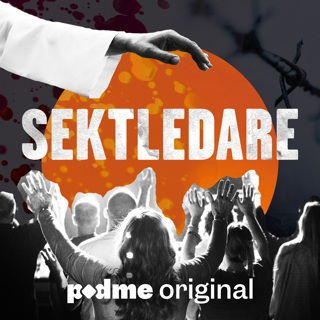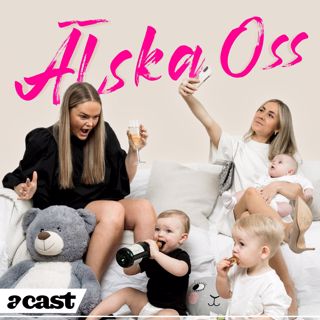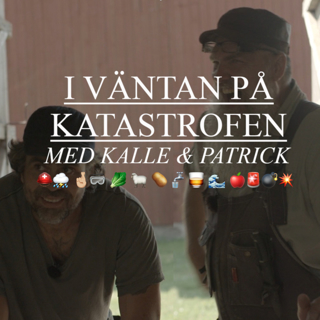
Ep. 205 Update on Reimbursement Cuts for the OBL/ASC with Dr. Jim Melton and Dr. Blake Parsons
In this episode Vascular Surgeon Jim Melton and Interventional Radiologist Blake Parsons give us the lay of the land on recent reimbursement cuts in the OBL/ASC space, including peripheral artery disease treatments and embolization procedures, as well as projections of what to expect in the next few years. --- CHECK OUT OUR SPONSOR Boston Scientific Eluvia Drug-Eluting Stent https://www.bostonscientific.com/en-US/medical-specialties/vascular-surgery/drug-eluting-therapies/eluvia/eluvia-clinical-trials.html?utm_source=oth_site&utm_medium=native&utm_campaign=pi-at-us-de_portfolio-hci&utm_content=n-backtable-n-backtable_site_eluvia_1&cid=n10008043 --- SHOW NOTES In this episode, host Dr. Aaron Fritts interviews interventional radiologist Dr. Blake Parsons and vascular surgeon Dr. Jim Melton about navigating recent Medicaid reimbursement cuts in their hybrid Office Based Lab (OBL) and Ambulatory Surgery Center (ASC), CardioVascular Health Clinic. This episode largely follows a question and answer format, where our guests respond to previously-submitted audience questions. The guests start by outlining recent vascular surgery and interventional radiology reimbursement cuts from 2022, as well as sharing information on future cuts through 2026. Most cuts are PAD-focused, but they also include pain management procedures like kyphoplasty. Dr. Parsons advises IRs to think about diversifying their practices to encompass procedures outside of PAD. He summarizes the average profits generated in various types of IR cases. He also predicts that there will be more reimbursement cuts on embolization cases, as prostate and geniculate embolizations become more popular. To protect profit margins by means of cost reduction, the doctors negotiate with vendor pricing and try to leverage disposables against capital. Dr. Melton describes the current political landscape and physician advocacy efforts. While industry has started to position themselves to help advocate for OBLs and ASCs, Dr. Melton believes that industry and physicians should be more politically active. He encourages physicians to get involved with their medical societies and reach out to local representatives and senators in order to highlight the benefits of patient care in an OBL/ASC setting– faster recovery, lower risk of infection, and overall lower cost for the healthcare system. --- RESOURCES CardioVascular Health Clinic: https://cvhealthclinic.com/ SIRPAC: https://www.sirweb.org/advocacy/sirpac/ OEIS: https://oeisociety.com/
6 Maj 202236min

Ep. 204 Filter Indications and Filter Tracking...Up Your Game with Dr. Stephen Wang
We talk with interventional radiologist Dr. Stephen Wang about building an IVC filter retrieval program, the current guidelines on filter placement, and how to minimize the complications of filters. The CME experience for this Podcast is powered by CMEfy - click here to reflect and unlock credits & more: https://earnc.me/nBihBQ --- CHECK OUT OUR SPONSOR DI4MDs Protect your most valuable asset, the skill and ability to practice your medical specialty. Be prepared by establishing a specialty specific disability insurance policy from the experts at DI4MDs. Contact them today at www.Di4MDS.com or call 888-934-4637. --- SHOW NOTES In this episode, host Dr. Christopher Beck interviews interventional radiologist Dr. Stephen Wang. They discuss building an IVC filter retrieval program, the current guidelines on filter placement, and the long-term risks of IVC filters. We start by discussing the joint consensus published in JVIR in 2020, a collaboration between vascular, cardiology, and IR societies. Dr. Wang notes that the main indication for placement of an IVC filter is an acute deep venous thrombosis (DVT) or pulmonary embolism (PE) in someone with a contraindication to anticoagulation. He says that they often collaborate with hematology to provide the best patient care, and they have even collaborated with hematology to set up a filter clinic. Next, they touch on the long-term risks of IVC filters. They discuss the PREPIC-1 and PREPIC-2 studies which were studies looking at mortality and risk reduction in patients with IVC filters. These studies demonstrated a low level of evidence that IVC filters being placed were actually working. Even more compelling, the risk of putting in filters often outweighs the benefit. Dr. Wang says that for a filter that is in for longer than five years, there is a 13% risk of partial or complete inferior vena cava (IVC) thrombosis. Additionally, at five years, 70% of filters perforated outside of the IVC and were touching or perforating a retroperitoneal structure. Finally, they discuss the filter retrieval program that Dr. Wang built at Kaiser. Important aspects of the process were educating primary care doctors, coordinating with critical care and hematology, and involving the anticoagulation clinic. He says he created a current procedural terminology (CPT) code-based list and hired a physician extender as filter lead to monitor and update the list. He was able to get his EPIC team on board by creating a safety net based on a procedural code. Ultimately, he raised the IVC filter retrieval rate from 38% in Northern California to 54% after his grand rounds and up to 80% after integrating his program into EPIC which allowed a provider to click a single button that would notify the patient that they were due to come in for their IVC filter retrieval. --- RESOURCES SIR Clinical Practice Guidelines for IVC Filters: https://www.jvir.org/article/S1051-0443(20)30531-5/fulltext PREPIC-1: https://www.nejm.org/doi/full/10.1056/NEJM199802123380701 PREPIC-2: https://jamanetwork.com/journals/jama/fullarticle/2279714 Dr. Wang’s paper: Long-term complications of inferior vena cava filters: https://www.jvsvenous.org/article/S2213-333X(16)30148-2/fulltext
2 Maj 202246min

Ep. 203 Making Informed Consent an Informed Choice with the Interventional Initiative with Dr. Isabel Newton, Margaret Simon, MSN, and Susan Jackson, MBA
Eric J. Keller talks with Isabel Newton, Susan Jackson and Margaret Simor from the Interventional Initiative about informed consent and helping patients make informed choices with newly developed Patient Decision Aids! --- CHECK OUT OUR SPONSOR DI4MDs Protect your most valuable asset, the skill and ability to practice your medical specialty. Be prepared by establishing a specialty specific disability insurance policy from the experts at DI4MDs. Contact them today at www.Di4MDS.com or call 888-934-4637. --- EARN CME Reflect on how this Podcast applies to your day-to-day and earn AMA PRA Category 1 CMEs: https://earnc.me/HzAYsS --- SHOW NOTES In this episode, our host Dr. Eric Keller interviews a panel of leaders from the Interventional Initiative, a not-for-profit organization devoted to raising awareness of minimally invasive image-guided procedures (MIIPs) among patients and referring clinicians. Our guests are interventional radiologists Drs. Susan Jackson and Isabel Newton and nurse and hospital administrator Margaret Simor. We start by discussing the origins of the Interventional Initiative, which started in 2015. After recognizing the public’s knowledge gap within interventional radiology procedures, the team decided to embark on a docuseries project to capture the impact that the field of IR could have on patients’ lives. This docuseries, entitled “Without a Scalpel,” is available on many streaming platforms. The series follows interventional radiologists and their patients in a variety of procedures and medical settings. Presenting new information within a film format has created a welcoming introduction to the field for both patients and physicians. Next, we shift to discussing the Interventional Initiative’s most recent project, a collection of patient decision aids. These materials are unique because they are specifically crafted to meet health literacy levels in the general public. They also provide statistics and graphics that clearly communicate benefits, risks, and alternatives to IR procedures. Ms. Simor, speaking from the experience of an IR nurse, recognizes the knowledge gaps that patients struggle with when giving informed consent. She looks forward to sharing the decision aids with other providers. Dr. Jackson advocates for presenting the decision aids in a variety of formats (paper, online, app-based, EHR-accessible) so that they are most available to as many people as possible. Dr. Newton describes the success of early clinical trials, which show that using the patient decision aids enriches physician-patient conversations, enhances patient autonomy, and even makes patients perceive that they spent more time with the physician. She encourages anyone who is interested in helping beta test the decision aid to reach out to the Interventional Initiative. --- RESOURCES The Interventional Initiative: https://www.theii.org/ The Interventional Initiative Twitter: @Interventional2 Without a Scalpel Docuseries: https://www.theii.org/the-docuseries
29 Apr 202249min

Ep. 202 Staffing the OBL with Dr. Krishna Mannava and Kristin Longwell
Vascular Surgeon Krishna Mannava and Vive Vascular VP of Operations Kristin Longwell give advice on staffing the OBL/ASC based on their experiences over the last few years, including the essentials positions to start with, whether or not to use consulting firms, and sourcing your staff. --- CHECK OUT OUR SPONSOR Boston Scientific Nextlab https://www.bostonscientific.com/en-US/nextlab.html?utm_source=oth_site&utm_medium=native&utm_campaign=pi-at-us-nextlab-hci&utm_content=n-backtable-n-backtable_site_nextlab_1&cid=n10008040 --- SHOW NOTES In this episode, host Dr. Aaron Fritts interviews vascular surgeon Dr. Krishna Mannava and Kristin Longwell, vascular technologist and VP of operations and from Vive Vascular. They discuss staffing in the office based lab, cultivating company culture, and how to recruit and retain good employees. We begin by discussing where to start with staffing when building your office based lab (OBL). First, you must determine what needs to be in house and what will be outsourced. They had help from a consulting firm that helped with hiring, the interview process, and establishing human resources policies. They began with two registered nurses (RNs), two radiologic technologists (RTs), one ultrasound technologist and one front desk operator. Dr. Mannava says he needs one RN to run a room and one for pre and post op. Similarly, he needs one RT to run the C-arm, and one helping tableside. Out of house needs are extensive and include billing, legal, IT, housekeeping, web development, and purchasing. Next, they discuss some challenges of running an OBL. They approached growth by maintaining open communication with their employees. All employees are hourly and have concrete schedules. Many are willing to work outside of their job definition to help out wherever needed during a day. Every afternoon, they have one RN and one RT work late, and they rotate through this schedule so everyone can maintain work life balance. Finally, they discuss company culture. Dr. Mannava explains that one year into their venture, they had a company retreat to revamp their mission which helped personalize it and was empowering for the employees. He believes that employees are customers, and he wants his employees to feel valued and excited about work. This helps with retention and ultimately saves money by avoiding high turnover. Kristen implemented a daily huddle, weekly updates, monthly operational meetings and annual retreats to keep employees engaged and ensure staff are all on the same page. Dr. Mannava ends by saying that he tries to instill a sense of gratitude at his workplace and he believes that it is his job to promote the work culture he wants in a top down fashion. --- RESOURCES VIVE Vascular https://www.vivevascular.com Outpatient Endovascular and Interventional Society (OEIS) 2022: https://oeisociety.com/meetings/2022-annual-meeting/
25 Apr 20221h

Historical Origins of Health Inequities with Dante King
Dr. Vishal Kumar talks with special guest Dante D. King about some of the historical origins of health inequities, and persistent biases we see in our healthcare settings today. *Trigger Warning: Sexual assault is mentioned from 9:29-17:30. --- EARN CME Reflect on how this Podcast applies to your day-to-day and earn AMA PRA Category 1 CMEs: https://earnc.me/selDZM --- SHOW NOTES In this episode, guest host Dr. Vishal Kumar interviews educator and author Dante King about America’s history of black subjugation and persistent biases in our healthcare settings today. First, Mr. King gives examples of historical case law and statutes that disenfranchised African Americans and placed them in derogatory and undignified positions. Some examples include the Fugitive Slave Act (1850), as well as various state laws that sought to claim ownership over black people and make sexually assault of black women legally permissible. A key court decision, Geroge v. State (1872) had ruled that rape was only considered a crime when committed against white women. We follow this thread of dehumanization of black women through modern day medicine, in which the maternal mortality rate reflects significantly higher rates in African American women. Dr. Kumar highlights recent studies that show the presence of implicit bias, as well as its intergenerational effects. He notes that privilege involves more than just perks and benefits; it encompasses the lack of barriers and obstacles in society. He also encourages listeners to realize that healthcare providers deny the benefit of the doubt to certain populations, which results in harmful under-intervention or over-intervention. --- RESOURCES Dante King Website: https://www.danteking.com/ Dante King Twitter: https://twitter.com/danteking2020 The 400 Year Holocaust: https://www.amazon.com/400-Year-Holocaust-Americas-Psychopathic-Sociopathic-ebook/dp/B09Q9C43Z9 The Human Doctor Podcast: https://podcasts.apple.com/us/podcast/the-human-doctor/id1571000871 Yale Preschool Study: https://medicine.yale.edu/childstudy/zigler/publications/Preschool Implicit Bias Policy Brief_final_9_26_276766_5379_v1.pdf Race and Intergenerational Economic Opportunity Study: http://www.equality-of-opportunity.org/assets/documents/race_paper.pdf
22 Apr 202240min

Ep. 201 Jobs: The Good, the Bad and the Snugly with Dr. Reza Rajebi and Dr. Kavi Devulapalli
We talk with Dr. Reza Rajebi and Dr. Kavi Devulapalli about what constitutes a good job in interventional radiology, how to spot red flags when you're job searching, and when to pivot in your career. --- CHECK OUT OUR SPONSOR Laurel Road for Doctors https://www.laurelroad.com/healthcare-banking/ --- EARN CME Reflect on how this Podcast applies to your day-to-day and earn AMA PRA Category 1 CMEs: https://earnc.me/gTvtfF --- SHOW NOTES In this episode, host Dr. Aaron Fritts interviews interventional radiologists Drs. Reza Rajebi and Kavi Devulapalli about what constitutes a good job versus a bad job in interventional radiology including red flags to look for, the importance of mentorship and when to pivot in your career. The three begin by discussing their training and various jobs they have held. Dr. Devulapalli took the first job he got out of residency, then worked with an interventional cardiologist building a multidisciplinary OBL. Now he does locums and teleradiology from home. Dr. Rajebi started in academics, then transitioned to private practice at a traditional IR and DR group. He is now at an OBL, now doing a mix of locums. Dr. Fritts currently does locums and DR in Dallas. They discuss what makes an ideal IR job, as well as what leads to job dissatisfaction. They agree that the people you work with are the most important aspect of a good job. Supportive colleagues who share your vision and a pathway for professional growth are also key requirements. Job dissatisfaction in IR is often due to lack of autonomy, inability to build your practice, private equity buyouts such as paths to partnership, and politics such as hospital contracts. They discuss how to spot red flags when job hunting. Dr. Rajebi advises to be aware of false promises, to do robust research, and to ask like minded people what they think of the position. They end by discussing when to pivot in a job you are unhappy with. Dr. Rajebi says not to pivot until you are sure you will get 3 out of 4 things that make an ideal job: location, salary, job satisfaction, and work life balance. Dr. Devulapalli shares his experience with job dissatisfaction and advice on mentorship, noting that you should not pivot too early or too often. He says that the moment you start having negative feelings about your job is when mentorship really matters. He advises to give it a year and use that time to reflect in order to pivot and find a better opportunity. --- RESOURCES Dr. Kavi Devulapalli’s blog: https://linemonkeymd.com/ Dr. Reza Rajebi’s paper on issues for the early career IR: https://pubmed.ncbi.nlm.nih.gov/33726963/
18 Apr 20221h

Ep. 200 PAD Stenting Algorithm with Dr. Luke Wilkins
We talk with Dr. Luke Wilkins about his stenting algorithm for treating peripheral artery disease, including a step by step discussion of the decision tree when deciding whether or not to stent. --- CHECK OUT OUR SPONSOR Boston Scientific Eluvia Drug-Eluting Stent https://www.bostonscientific.com/en-US/medical-specialties/vascular-surgery/drug-eluting-therapies/eluvia/eluvia-clinical-trials.html?utm_source=oth_site&utm_medium=native&utm_campaign=pi-at-us-de_portfolio-hci&utm_content=n-backtable-n-backtable_site_eluvia_1&cid=n10008043 --- SHOW NOTES In this episode, our host Dr. Aparna Baheti interviews interventional radiologist Dr. Luke Wilkins about his treatment algorithm for Peripheral Arterial Disease (PAD). This algorithm is linked below, under “Resources.” Dr. Wilkins starts by explaining his treatment decisions for non-occlusive lesions. If the lesion is less than 10 cm he prefers to use directional atherectomy and percutaneous transluminal angioplasty (PTA). However, if the lesion is greater than 10 cm, directional atherectomy poses the risk of distal embolization, so he will only perform PTA. In both cases, he recommends using IVUS to evaluate the efficacy of the treatment and then proceeding with a drug-coated balloon (DCB) to prevent re-stenosis. On the other hand, if the disease is occlusive, Dr. Wilkins first attempts to cross the lesion. This can be achieved by going through microchannels with a guidewire or boring through the occlusion with a crossing device. If the lesion is unable to be crossed, he attempts subintimal recanalization. We discuss spontaneous re-entry into the true lumen, as well as re-entry devices like the Outback and the Pioneer catheters. We also take a detour into the Subintimal Arterial Flossing with Anterograde-Retrograde Intervention (SAFARI) technique that can be used if re-entry is challenging. After crossing is complete, Dr. Wilkins evaluates vessel diameter. In his experience, vessels that are wider than 5 mm have better stent patency, so he will place a drug eluting stent. In vessels of smaller diameters, Dr. Wilkins relies on other approaches such as interwoven stents with smaller diameters, directional atherectomy, and Tacks (to treat dissection flaps). Finally, Dr. Wilkins discusses medical management and follow-up care for PAD patients. He recommends dual antiplatelet therapy, smoking cessation, and if claudication was an initial concern, patient education on the importance of walking. He follows up with patients in 1, 6, and 9 months, and then annually. During each follow up appointment, he checks ABI, PVR, and arterial duplex for clinical improvement. --- RESOURCES PAD Stenting Algorithm Decision Tree: https://www.backtable.com/shows/vi/podcasts/200/pad-stenting-algorithm TASC Guidelines: https://journals.sagepub.com/doi/10.1177/1358863X15597877?url_ver=Z39.88-2003&rfr_id=ori:rid:crossref.org&rfr_dat=cr_pub%20%200pubmed Articles Mentioned: Schneider PA, Laird JR, Doros G, Gao Q, Ansel G, Brodmann M, Micari A, Shishehbor MH, Tepe G, Zeller T. Mortality not correlated with paclitaxel exposure: an independent patient-level meta-analysis of a drug-coated balloon. Journal of the American College of Cardiology. 2019 May 28;73(20):2550-63. Secemsky EA, Kundi H, Weinberg I, Jaff MR, Krawisz A, Parikh SA, Beckman JA, Mustapha J, Rosenfield K, Yeh RW. Association of survival with femoropopliteal artery revascularization with drug-coated devices. JAMA cardiology. 2019 Apr 1;4(4):332-40. Freisinger E, Koeppe J, Gerss J, Goerlich D, Malyar NM, Marschall U, Faldum A, Reinecke H. Mortality after use of paclitaxel-based devices in peripheral arteries: a real-world safety analysis. European heart journal. 2020 Oct 7;41(38):3732-9.
15 Apr 202235min

Ep. 199 Advanced Minimally Invasive Pain Interventions with Dr. David Prologo
We talk with interventional radiologist Dr. David Prologo about minimally invasive pain interventions, multidisciplinary pain management, and how he built a successful pain practice. --- CHECK OUT OUR SPONSOR RADPAD® Radiation Protection https://www.radpad.com/ --- EARN CME Reflect on how this Podcast applies to your day-to-day and earn AMA PRA Category 1 CMEs: https://earnc.me/GzA4Iu --- SHOW NOTES In this episode, host Dr. Michael Barraza interviews Dr. David Prologo, director of interventional radiology at Emory about minimally invasive pain interventions, multidisciplinary pain management, and how he created a booming practice that is well known by patients and providers nationally. Dr. Prologo begins by discussing his training in obesity medicine and how his interests in pain management developed. He discusses his book, The Catching Point, which explores weight loss culture and the fault of society and medical providers in placing the blame on patients and the new options available in IR for weight loss. He says his interest in pain management was similar to his interest in obesity medicine. He was curious about how he could use his tools and skills as an IR to treat obesity and pain with minimally invasive procedures. Next, they discuss how IR fits into the multidisciplinary team that plays a role in pain management. He explains that the combination of technology and an IRs position in the hospital makes them ideal for the job. He says a key is to maintain relationships with all other specialties by focusing initially on procedures that other specialties don't perform, in order to build rapport. He also notes that the procedures he performs result in rapid pain reduction and greatly decrease length of stay which is a huge incentive for hospitals and other specialties to seek out IR and make referrals. Finally, the two discuss the types of patients Dr. Prologo treats, and the procedures he does. He divides patient population into neoplastic versus non neoplastic pain, and spine versus non spine pain. He sees 90% of patients in clinic for procedure planning. Dr. Prologo emphasizes the importance of advocating for patients and continuing to see them even if they do not need an IR procedure. He discusses his 8, 3, 3, 3 method for percutaneous cryoneurolysis and discusses the various outcomes he is able to achieve in pain reduction. Dr. Prologo minimizes non responders by doing test blocks, understanding central desensitization, and selecting patients for procedures appropriately. --- RESOURCES Interventional Cryoneurolysis: An Illustrative Approach: https://pubmed.ncbi.nlm.nih.gov/33308581/ Focused Cryo: https://gra.org/company/213/Focused_Cryo.html Nantes criteria for pudendal neuralgia: https://pubmed.ncbi.nlm.nih.gov/17828787/ The Catching Point https://www.catchingpoint.com David Prologo Website: https://www.drprologo.com/about
11 Apr 20221h 8min





















